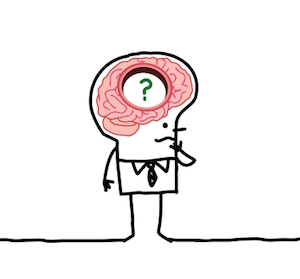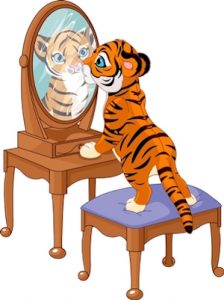Guilty!
Yes, I’ve lost it with my kids. For the most part I am a calm, cool, quiet person. In my education as a nurse and a teacher it was part of the training. Yet if you were to ask my daughters if I am always calm, cool, and quiet, you may not get the answer I want you to hear. However, to prove my point it would be necessary to share stories my daughters may not be particularly happy to see published, but trust me – I. Have. Stories. However, so do my children – about how I handled those storied situations. I am not proud, but I am human.
Had I read this informative and enlightening piece by Stefanie Frank, I think I may have handled my frustration towards my children with an entirely different approach during those “certain situations”. Or at least I would have been totally aware of my incompetent parenting skills at that particular moment.
This is Ms Frank’s second installment as a featured guest writer for TWC. Her first piece, How to Help Teenagers Become Better Decision-makers, is a great segue into this article. Think about it: if our teens would just make decisions that WE think they should make, life would be so easy!
Okay, okay, life doesn’t work like that. Our children are their own people, and as parents we need to respect and cultivate their uniqueness and independence.
Enjoy the journey of watching them grow, learn, and develop into adults you will be proud of.
Read what Stefanie Frank has to say about this….
The Most Important – and Never Talked About – Skill You Could Ever Teach Your Children
Over the years of working personally with teens and working with parent-teen relationships, the most powerful lesson I have learned is this:
improving our relationships with others is not always about ‘tips and tricks’ about specific things we do, but rather about how we SEE another person.
How we see someone determines how we act with them.
One of my favorite authors on child development, Gordon Neufeld, describes it with this example: if you were to see a child throwing a tantrum, and you saw his behavior as just being defiant, spoiled, or having a bad attitude - you’d respond a certain way.
If, however, you saw this child as being completely overwhelmed by their emotions and unsure of what to do about it – you’d respond very differently. How we see or interpret someone’s behavior influences how we respond to them.
Sometimes having a deeper understanding of what is going on underneath the behaviors of another person gives us a new way of seeing them.
And this can also help us take a step back and understand that some of their behaviors may simply be a part of a process that they need to go through, rather than a personal attack on us.
Looking at it that way gives us mental and emotional room to breathe and come up with new and authentic ways of playing a role in their life.
As adults, we especially need to keep in mind that the role we play in a teenager’s life may look very different than before.
One thing I have noticed many adult-adolescent relationships is that underneath the frustration that many adults feel is a level of rejection.
This feeling of rejection comes from us SEEING their behavior as though it is meant to hurt us, rather than seeing it as a part of their journey of growth from being totally dependent to wanting to feel their own independence.
When you take the behaviors of a teenager personally – as though they are personally and intentionally trying to hurt you, you add rejection and emotions to the equation. This leads you into a state of unrest, tension and defensiveness.
On a brain level, when you SEE someone’s behavior as a personal attack on you, you are actually triggering a part of your brain involved in fear (your amygdala).
Once this has been triggered, the rest of your brain – the parts involved in communication, rational thinking, etc., actually go ‘off-line’ and you can’t access them. (see Daniel Goleman for information on ‘amygdala hijacks’).
Not all interactions with teens start out as negative, but because there’s an existing tension or feelings of distance and rejection, even small interactions that start out neutral become sources of arguments or tension.
If you feel angry/ hurt/ defensive/ etc., it means you are in fight or flight, which means your amygdala is triggered, which means it is NOT the time to communicate. You won’t be able to say what you want to say in a way that the other person will hear, because you won’t be using the parts of your brain involved in communication - you’ll be using your more ‘primitive’ brain to speak.
A key to more effective communication is to help yourself get out of an ‘amygdala hijack’.
One way to do this is to truly understand how much control you can have over your own reactions. When you take time to reflect and find ways to get to a calm space and learn how to return to this place after you have your initial reaction, this will bring a totally different ‘vibe’ into your interactions with your teen.
When you become aware of the fact that you’re feeling rejected,
just this simple awareness can be one of the most powerful steps to finding release from being ‘hijacked’ by your emotions.
And in fact, ‘observing yourself’ or becoming aware of your own reactions activates a part of the brain that is so powerful, it can help you override ‘emotional hijacks’ and get into a place of strong and clear communication really quickly.
Why should adults do the work to become more self-aware and not the teenagers?
Because as adults, we already have the brain architecture that can help us do this more easily than teenagers (something called ‘back to front’ development).
And becoming aware of our own emotions actually feels really good.
So if we make the effort to be more self-aware, we can already reap benefits (feel better) without having to over-exert ourselves by trying to achieve the impossible: change another person.
The best part: when we become self-aware and more in control of our emotional reactions, we MODEL this to our teen.
Modeling is one of the most powerful ways a teen will learn how to do this for themselves (thanks to something called ‘mirror neurons’).
How can get to a place so we don’t feel so defensive/ reactive?
This is where many of the ‘mindfulness’ practices we see today come in handy.
There are so many out there today. Here are a couple of places to get you started.
Calm.com has an app with meditation sounds to help you meditate and guided meditations (you’ll feel calmer as soon as you see their site).
More than Sound has a lot of products from Daniel Goleman and a whole category on mindfulness, including for kids .
Headspace.com is a fun site with some easy to understand science, great apps and tools.
All of this comes down to becoming aware of how we are reacting and then acknowledging that we can take steps to have more control. This is the most important skill you could ever model to a teenager.
I’ll be covering strategies on how to do all this
(including lowering ‘emotional hijacks’ and defensiveness,
shifting our mindset to achieve more of our goals)
- and how to teach young people to do this for themselves
at my upcoming one-day parent/teacher retreat this summer (August 6th).
Go to mindfulmindsets.com and sign up to get details!




